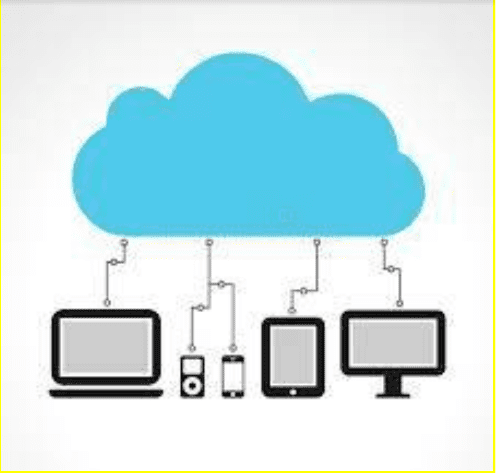Multi-cloud is a 10-15 year IT industry trend where organizations employ a combination of on-premises, private cloud, public cloud, and edge to design, operate, access, and secure their applications. A recent study found that 81% of businesses use multiple cloud providers. When a business adopts a multi-cloud strategy from an IT consulting firm, it has the flexibility to choose the best networking solutions for each workload.
There are also potential challenges to consider when using a multi-cloud strategy. Managing and coordinating multiple cloud environments can be complex and time-consuming. It is important to carefully plan and design a multi-cloud architecture to ensure that it meets the organization’s needs and can be effectively managed.
The comment offers reliable, robust, and time-tested, IT cloud Infrastructure services and can assist in the design, implementation, and integration of existing core computing, network, storage, and security services with innovative multi-cloud initiatives. Although there is a method to employ hybrid cloud services, Multi-Cloud services are a better option due to their numerous distinctive and practical advantages.
What is Multi-Cloud Technology?
Multi-cloud computing is the integration of several cloud computing services from different suppliers in a single hybrid architecture. It enables enterprises to employ the optimum combination of cloud services from many providers to fulfill their unique needs, rather than being beholden to a single supplier. It involves the distribution of cloud assets, software, and applications across many cloud-hosting environments. The multi-cloud can also refer to any integration of several software-as-a-service (SAAS) or platform-as-a-service (PAAS) cloud offerings. Although it generally comprises public infrastructure-as-a-service (IASS) environments,
Increased flexibility and choice are two of the primary advantages of multi-cloud computing. Instead of being confined to the capabilities of a single provider, enterprises may use many cloud providers to pick the best provider for each workload or application. This can aid in the optimization of performance, cost, and dependability.
Difference between hybrid and multi-cloud computing?
So it is already explained how the multi-cloud architecture entails combining the best features of multiple cloud service providers to create the ultimate piece of innovative technology. But if multi-cloud is simply the combination of two cloud computing services, isn’t that the same as a hybrid cloud strategy?
Even though people (incorrectly) use the terms “hybrid” and “multi-cloud” interchangeably and that both require vendor collaboration, there is one major difference. Hybrid clouds always include a private cloud and are typically managed as a single entity. Multi-clouds, on the other hand, always include more than one public cloud service and do not have to include a private cloud at all.
Why are enterprises more inclined toward multi-cloud technology?
Multi-cloud provides several benefits and helps businesses by ensuring organizational continuity and meeting needs. Numerous companies are employing a variety of cloud platforms and services to speed up the next stage of their digital transformation. Utilizing the finest cloud technologies from two or more providers while controlling prices and optimizing performance are the main benefits of the multi-cloud strategy.
Prevent vendor lock-in.
Organizations that deploy their applications or resources on a single cloud platform struggle to relocate their operations from one service to another. This is because the organization is working on a single cloud, and frequently updating its application increases its investment, making transferring from one cloud to another difficult.
However, if an organization is already using multi-cloud, the transfer of the organization between clouds becomes simple and provides the advantage of new technology from various providers that they choose.
Improve disaster recovery
Multi-cloud backups enable better backup systems and access to backups. If one cloud service fails, you can still rely on other providers to keep your data safe.
Minimize Capex
A data center necessitates a large number of infrastructures, hardware, and power supplies. The cost of purchasing these items outright is prohibitively expensive. When there are more of these, there is less capital available for day-to-day business operations. Using multi-cloud can shift CapEx (capital expenditure) spending to more flexible OpEx (operational expenditure).
Risk mitigation
Another advantage of multi-cloud strategies is risk management. If a system failure or an attack occurs, a multi-cloud user can easily switch from one cloud provider to another.
Multi-Cloud helps organizations reduce risk by deploying redundant, impartial network access control solutions that, among other things, offer robust authentication methods and vulnerability testing.
Multi-Cloud Challenges
Almost all businesses now use multi-cloud to boost productivity and performance, cut costs, and avoid vendor lock-in. However, the expanding number of tools and procedures offered by many cloud providers, which raises administration complexity, is a drawback of multi-cloud.
While establishing the multi-cloud infrastructure, organizations may encounter the following issues:
User access controls
The use of multiple clouds complicates access control management as it involves multiple user access controls across multiple systems at the same time. Policy tracking and enforcement became more difficult.
Data management
Processing a large set of data as an organization is a massive challenge in any environment. It becomes more complicated when an organization employs multiple clouds. It is important to ensure that the data is accessible to the user and applications that need to keep it secure. To accomplish this, proper, robust data processing strategies have to be implemented.
Conclusion-
Multi-cloud computing also offers increased resilience and fault tolerance, as it allows organizations to spread their workloads across multiple cloud providers, reducing the risk of downtime in the event of a failure at one provider. Overall, multi-cloud computing offers organizations the ability to tailor their use of cloud services to meet their specific needs, while also providing increased flexibility, resiliency, and choice.



































